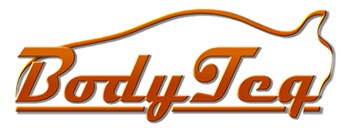Shimmering Tomorrow: Unveiling the Future Innovations in Metallic Paint
In the realm of automotive and industrial design, metallic paint has always held a special allure, transforming surfaces into gleaming works of art. Yet, as technology advances and innovation knows no bounds, the future of metallic colour is poised to undergo remarkable transformations. From cutting-edge formulations to sustainability enhancements, the evolution of metallic paint promises a captivating journey into the intersection of aesthetics and functionality.

Nanotechnology and Advanced Formulations
Traditional metallic colour has long relied on metal flakes to achieve its lustrous finish. However, the future heralds the integration of nanotechnology, where microscopic particles will take center stage. Nano-sized metallic particles promise enhanced color depth, improved durability, and a more even distribution, offering a level of brilliance and resilience previously unimaginable. These advancements may pave the way for a broader spectrum of hues and effects, allowing for bespoke customization tailored to individual preferences.
Read more: Popular Metallic Car Paint Colors: Adding Depth And Dimension To Your Ride
Interactive and Dynamic Finishes
Imagine a metallic paint that responds to external stimuli—light, temperature, or even touch. Futuristic innovations might enable interactive finishes that shift colors based on environmental changes or user interaction. Smart coatings that adjust hues according to temperature variations or user preferences through smartphone apps could redefine the very notion of paint customization.
Self-Healing and Protective Coatings
The quest for longevity and resilience in metallic colour continues to inspire research into self-healing coatings. Future formulations may possess the ability to repair minor scratches or imperfections autonomously, maintaining the paint’s flawless facade over extended periods. Additionally, developments in protective coatings could offer heightened resistance to environmental factors such as UV radiation, corrosion, and harsh weather conditions, ensuring both aesthetic appeal and durability.
Sustainable and Eco-Friendly Solutions
As sustainability becomes an imperative across industries, the future of metallic paint lies in eco-friendly formulations. Innovations aim to reduce environmental impact by minimizing volatile organic compounds (VOCs) and incorporating renewable materials. Water-based metallic paints, bio-based pigments, and recyclable formulations are among the eco-conscious approaches that could revolutionize the industry, catering to the growing demand for sustainable solutions.
Application in Diverse Industries
Beyond automotive applications, future metallic paint innovations are set to transcend boundaries, finding their way into various industries. From consumer electronics to architecture and fashion, the versatility of metallic paint opens doors to novel applications. Think smartphones with chameleon-like finishes or buildings adorned with dynamic, light-reactive coatings, transforming urban landscapes into shimmering spectacles.
Read more: Understanding the Role of ECU in BMW: A Comprehensive Guide
Commonly Asked Questions
1. What are the key benefits of nanotechnology in metallic paint?
Nanotechnology offers several advantages, including enhanced color depth, improved durability, and a more uniform distribution of metallic particles. This technology allows for a wider range of hues and effects while ensuring a longer-lasting and more resilient finish.
2. How do interactive metallic finishes work?
Interactive finishes respond to external stimuli like light, temperature, or touch. These innovative coatings use specialized materials that change color or appearance based on varying conditions or user interaction. They could potentially be controlled via smartphone apps, allowing for personalized customization.
3. Can self-healing metallic paint completely repair scratches?
Self-healing coatings have the capability to repair minor scratches and imperfections over time. While they may not completely erase deep scratches, these coatings can significantly minimize the appearance of superficial damage, maintaining the paint’s overall pristine look.
4. Are sustainable metallic paint formulations as durable as traditional ones?
Sustainable metallic paint formulations aim to minimize environmental impact by reducing VOCs and incorporating eco-friendly materials. While their primary focus is sustainability, advancements in technology are striving to ensure that these formulations maintain comparable durability and aesthetic quality to traditional paints.
5. What industries can benefit from future metallic paint innovations?
Beyond automotive applications, future metallic paint innovations have diverse applications. Industries such as consumer electronics, architecture, fashion, and even aerospace can benefit from these advancements, offering new avenues for design and customization.
6. Are future metallic paint innovations cost-effective?
Initially, as with any new technology, innovative metallic paint formulations might carry higher costs due to research and development. However, as these technologies mature and become more widespread, increased efficiency in production methods could potentially lead to more cost-effective options in the future.
7. How do sustainable metallic paints contribute to environmental preservation?
Sustainable metallic paints focus on reducing harmful emissions, utilizing renewable materials, and employing eco-friendly manufacturing processes. By minimizing the use of harmful chemicals and reducing their environmental footprint, these paints contribute positively to environmental preservation efforts.
8. Can future metallic paints be applied to unconventional surfaces?
Yes, advancements in paint technology aim to enhance versatility, making it possible to apply metallic paints to various surfaces beyond traditional ones. With proper preparation and application techniques, these paints can be used on diverse materials, expanding their potential applications.
9. Are there any safety concerns associated with future metallic paint formulations?
Generally, metallic paints are safe when used according to manufacturer guidelines. However, it’s essential to adhere to safety precautions during application, especially regarding ventilation and protective gear. Moreover, as new formulations emerge, ensuring they meet safety standards remains a priority.
10. How can consumers stay updated on the latest advancements in metallic colour technology?
Consumers can stay informed through industry publications, technology forums, manufacturer updates, and specialized trade shows or exhibitions dedicated to paint and coatings. Following reputable sources and industry leaders can provide insights into the latest advancements and trends of metallic colour innovation.
Conclusion
The horizon of metallic colour is an evolving canvas where science, aesthetics, and sustainability converge. Future innovations promise not just a mere enhancement of visual appeal but a redefinition of possibilities. Nanotechnology-driven brilliance, interactive dynamics, self-sustaining properties, and eco-conscious formulations herald a future where metallic colour transcends its conventional boundaries, leaving an indelible mark on the landscape of design and innovation. As we navigate this frontier, the allure of metallic paint beckons—a shimmering testament to human creativity and ingenuity.

